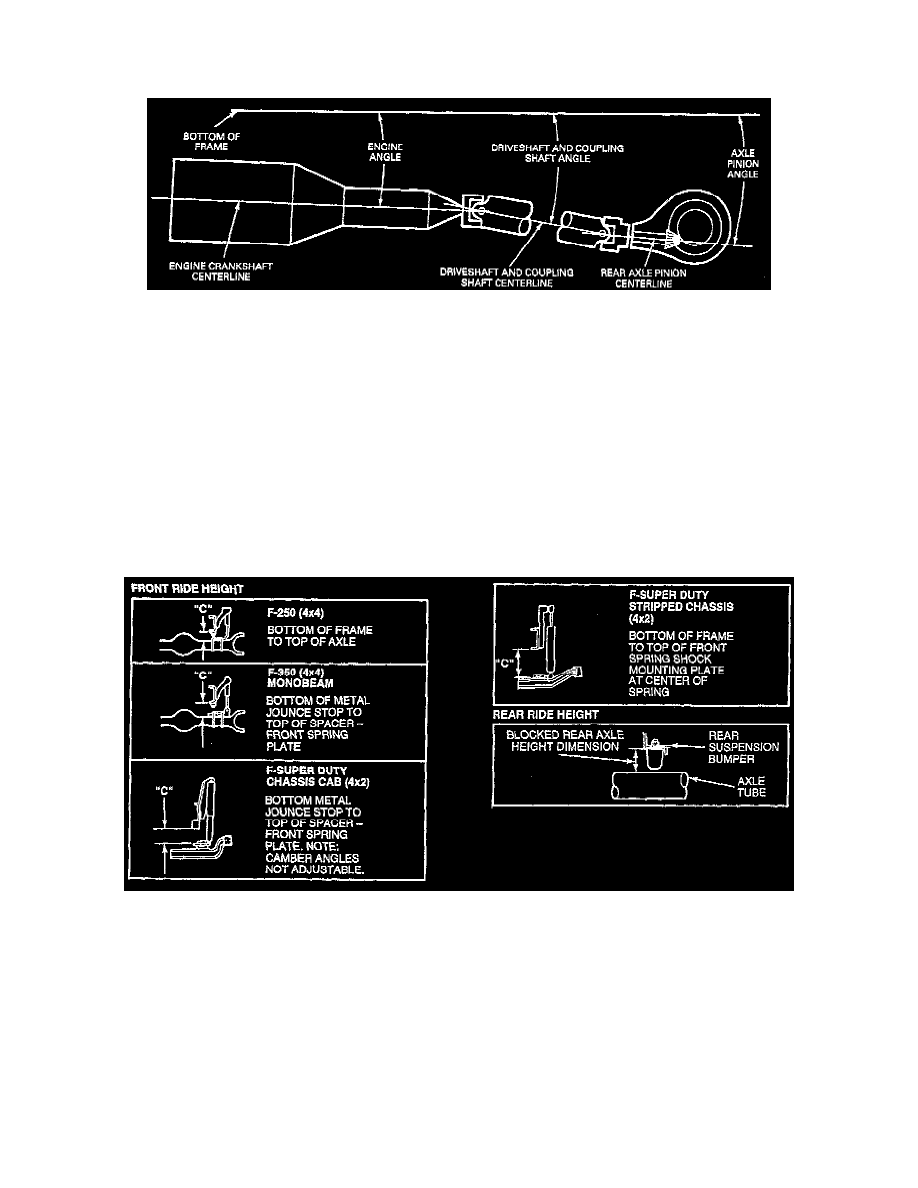F 250 4WD HD Pickup V8-460 7.5L VIN G EFI (1997)

Drive/Propeller Shaft: Testing and Inspection
Driveline Angles
DESCRIPTION
Driveline angularity is the angular relationship between the engine crankshaft, the driveshaft and the rear axle pinion. Factors determining driveline
angularity include ride height (rear spring) and engine mounts.
An incorrect driveline (pinion) angle can often be detected by the driving condition when vibration occurs.
-
A vibration during coasting from 72 to 56 km/h (45 to 35 mph) is often caused by a high pinion angle.
-
A vibration during acceleration, again around 56 to 72 km/h (35 to 45 mph), may indicate a lower-than-specified pinion angle. Refer to the
following procedure to check driveline angle.
NOTE: Driveline angles are given in relation to a 0-degree longitudinal (fore-aft) unibody frame rail angle and are specified for individual
components.
PROCEDURE
1. Raise the vehicle on a drive-on type hoist or back onto a front-end alignment rack. Bounce the vehicle to normalize the suspension. This ensures
that the suspension components are in the normal-load condition.
2. Measure the ride height. The vehicle must be in the curb height (empty) condition. Find the recorded ride height in the Rear Driveline Angles
charts. The specified driveline angles correspond to the measured ride height.
3. Driveline angles are measured with Pinion Angle Level Gauge T68P-4602-A or with an adjustable bubble (spirit level) protractor. The protractor
is used when the tool kit is not available or when the angles to be measured are more than 12 degrees. All angles should be read within 1/2 degree
with the tool or protractor held plumb on a clean, flat surface.
